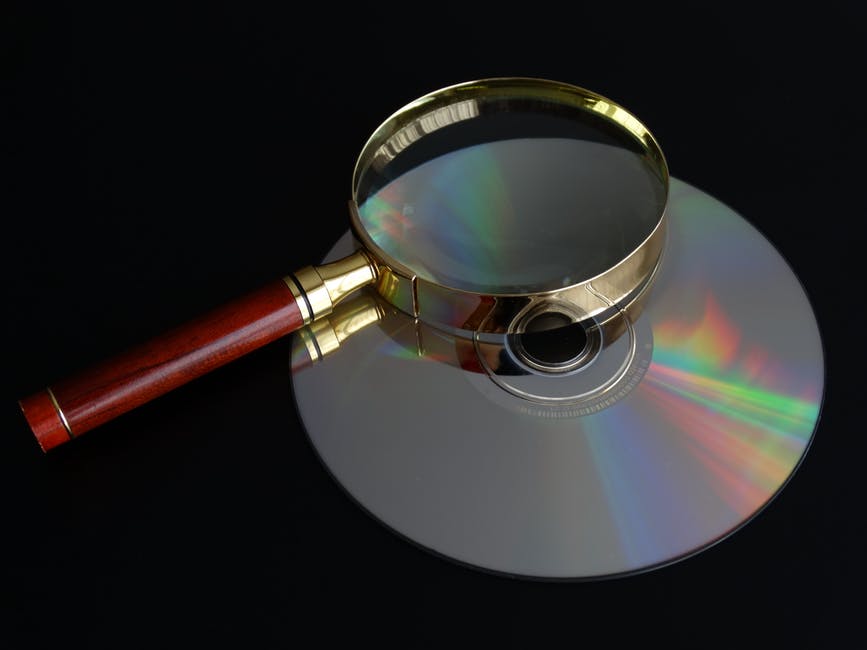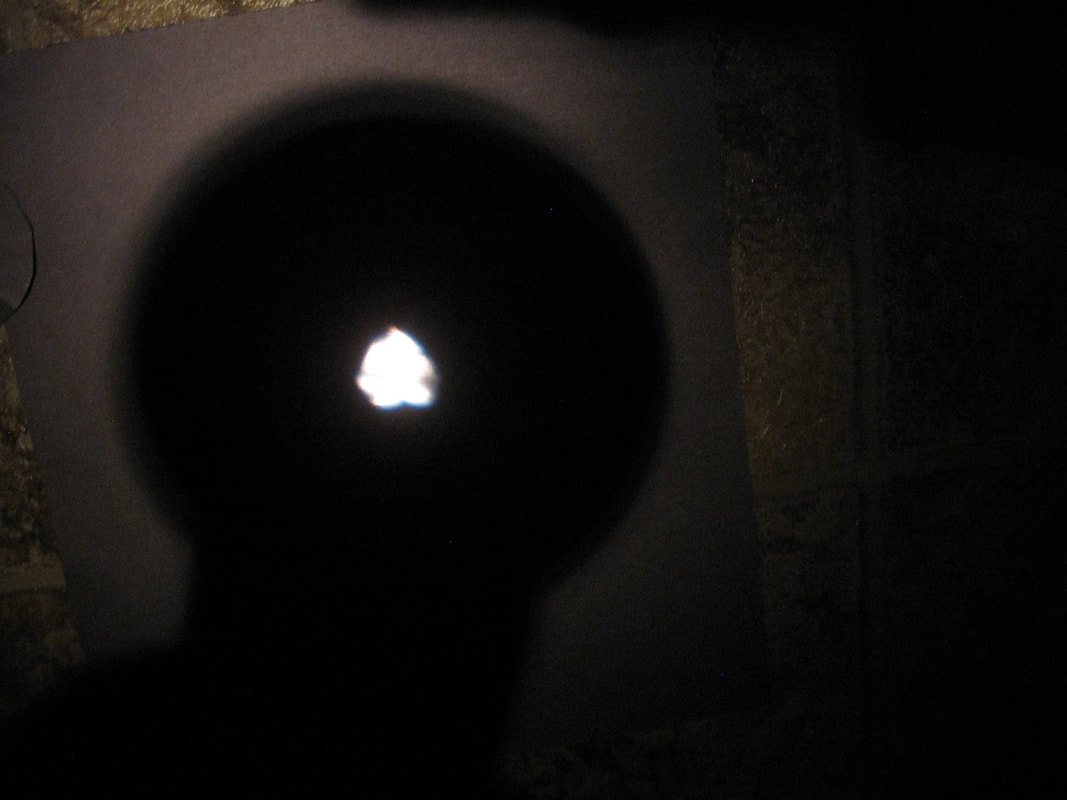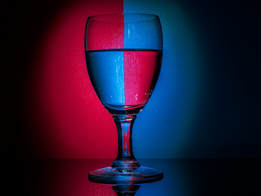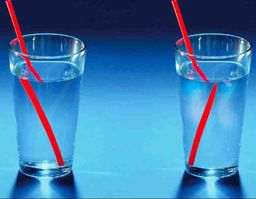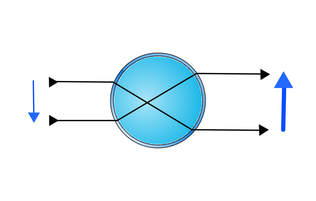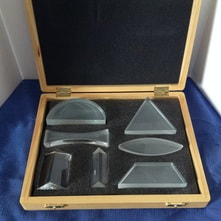Lenses
The most likely lens to be found in a primary classroom is a magnifying glass. It makes things appear larger and can be used with a flashlight to present the idea of focal point. It does not, by itself, isolate or present Light as such. Although a light source and focal point do offer the opportunity to talk about a fundamental property of Light which is that Light can be bent or refracted.
A lens bends Light.
A lens bends Light.
Water is fundamental to a primary environment. Spooning, pouring, cleaning, playing activities all involve water. While pouring water into a glass it is easy to arrange examples of refraction and magnification. A simple diagram of a circle with rays can be brought into play to begin talking about Light as traveling, moving.
A round container can produce spectra, shadows and a chance to talk about how raindrops make rainbows. The simple white light projection through the round container, shown in slow motion, reveals both focus as a lens and casting of wave shadows.
|
|
|
|
A lens set is a simple, affordable addition to any classroom. Lenses connect Light to Geometry.
Primary Coil recommends glass over acrylic as acrylic scratches over time. Glass can chip especially when children use the lenses as building blocks, which they will do, but a chip actually make the lens more interesting rather than simply degrading it. Here are some of the basic things a child can do. |
|
|
|
The sources of choice with lenses are the same red, green blue LED lights used to show color mixing, this time with slit caps to produce narrow beams.
|
|
|

